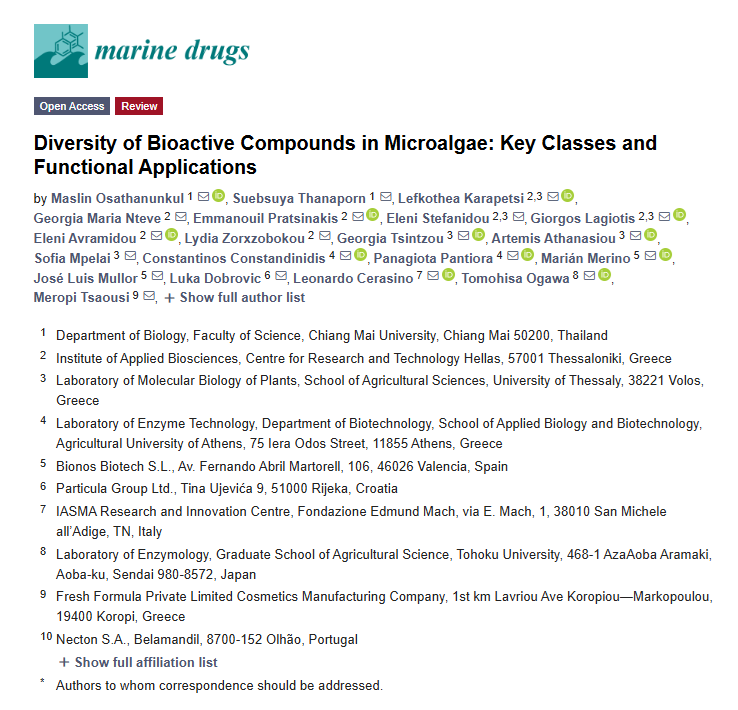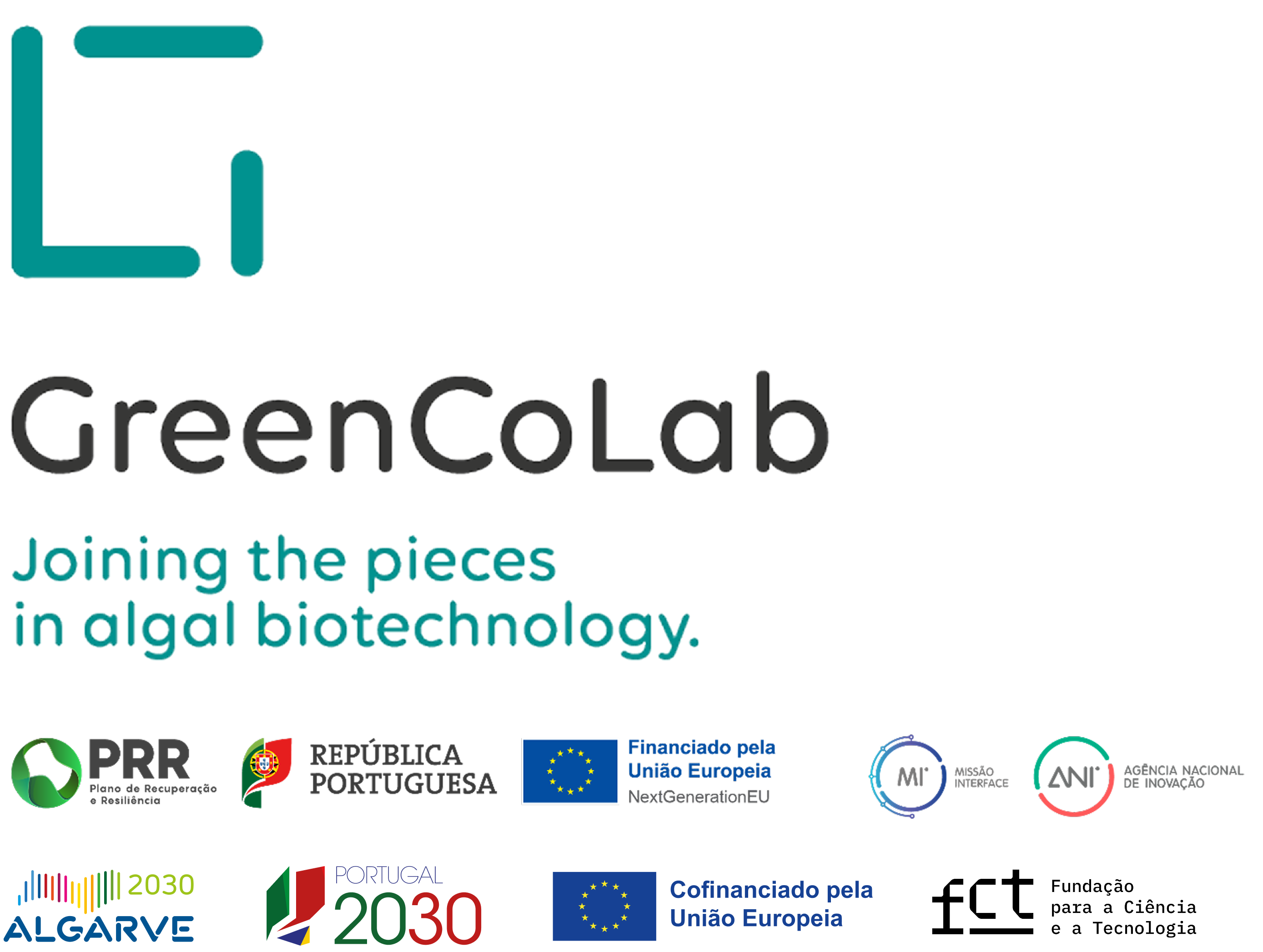

TITLE
Diversity of Bioactive Compounds in Microalgae: Key Classes and Functional Applications
JOURNAL
Marine Drugs
AUTHORS
Maslin Osathanunkul, Suebsuya Thanaporn, Lefkothea Karapetsi, Georgia Maria Nteve, Emmanouil Pratsinakis, Eleni Stefanidou, Giorgos Lagiotis, Eleni Avramidou, Lydia Zorxzobokou, Georgia Tsintzou, Artemis Athanasiou, Sofia Mpelai, Constantinos Constandinidis, Panagiota Pantiora, Marián Merino, José Luis Mullor, Luka Dobrovic, Leonardo Cerasino, Tomohisa Ogawa, Meropi Tsaousi, Alexandre M. C. Rodrigues, Helena Cardoso, Rita Pires, Daniel Figueiredo, Inês F. Costa, Catarina Anjos, Nikolaos E. Labrou and Panagiotis Madesis
ABSTRACT
Microalgae offer a sustainable and versatile source of bioactive compounds. Their rapid growth, efficient CO2 utilization, and adaptability make them a promising alternative to traditional production methods. Key compounds, such as proteins, polyunsaturated fatty acids (PUFAs), polyphenols, phytosterols, pigments, and mycosporine-like amino acids (MAAs), hold significant commercial value and are widely utilized in food, nutraceuticals, cosmetics, and pharmaceuticals, driving innovation across multiple industries. Their antiviral and enzyme-producing capabilities further enhance industrial and medical applications. Additionally, microalgae-based biostimulants and plant elicitor peptides (PEPs) contribute to sustainable agriculture by enhancing plant growth and resilience to environmental stressors. The GRAS status of several species facilitates market integration, but challenges in scaling and cost reduction remain. Advances in biotechnology and metabolic engineering will optimize production, driving growth in the global microalgae industry. With increasing consumer demand for natural, eco-friendly products, microalgae will play a vital role in health, food security, and environmental sustainability.



